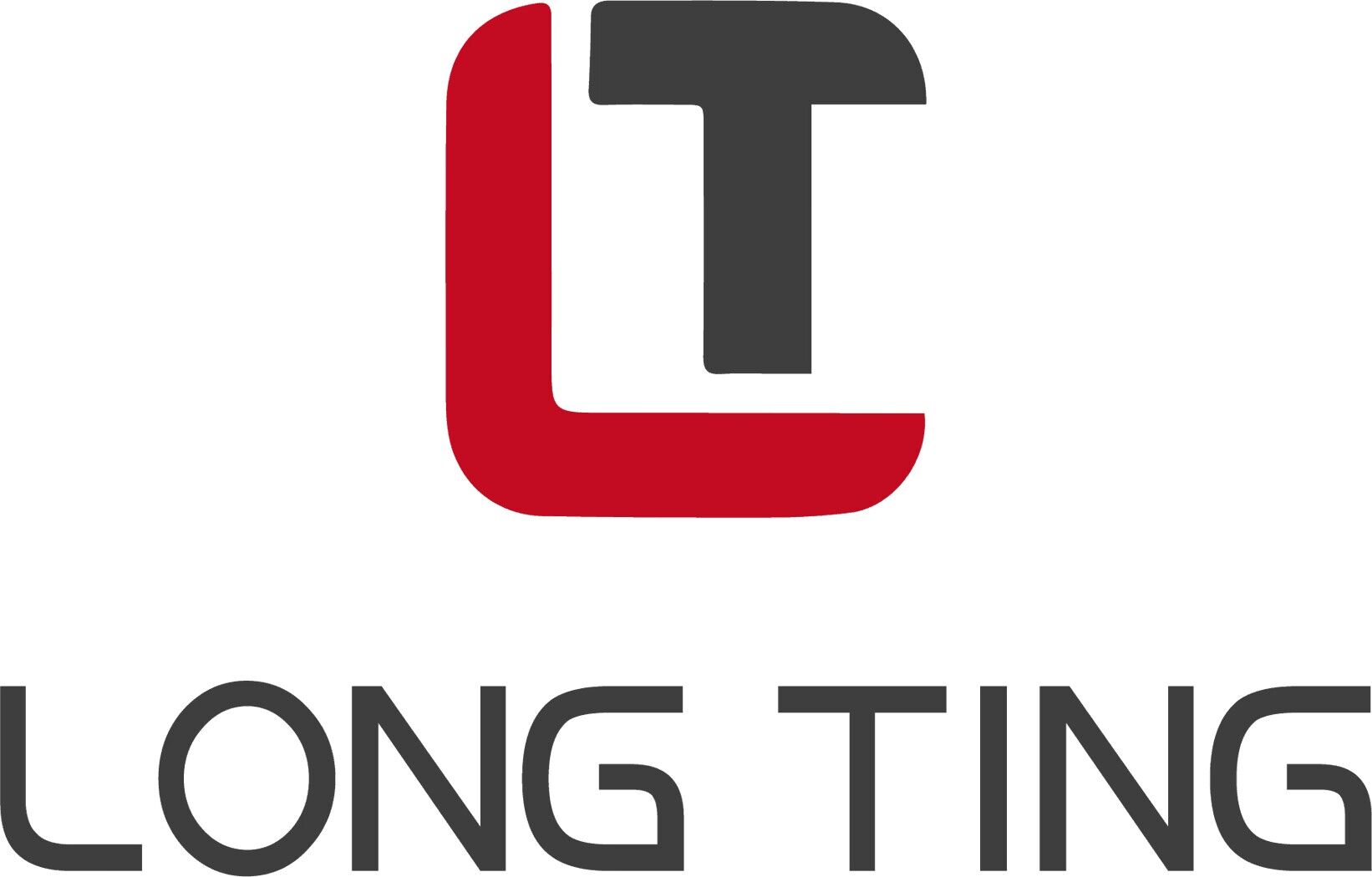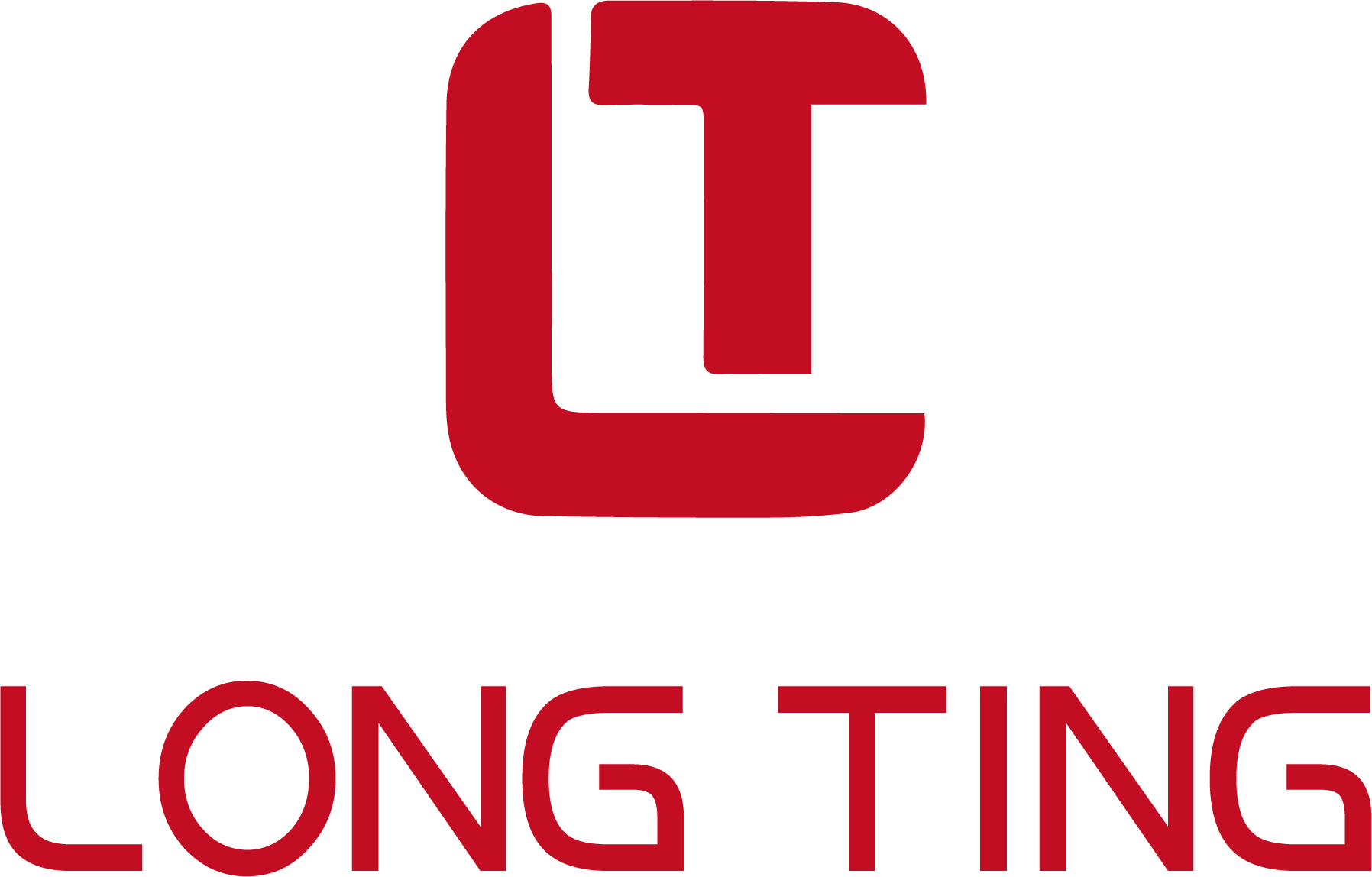The main production equipment of SMT production line includes printing machine, dispensing machine, mounting machine, reflow oven and wave soldering machine. Auxiliary equipment includes testing equipment, reworking equipment, cleaning equipment, drying equipment and material storage equipment.
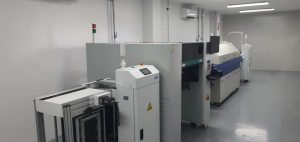
SMT line main production equipment
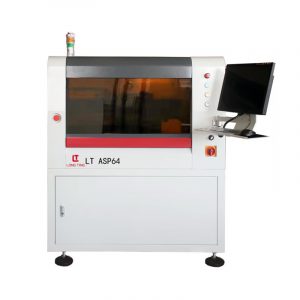
I. Printing machine
The printing machine is used to print solder paste or SMD adhesive, and its function is to correctly funnel the solder paste or SMD adhesive to the corresponding position on the printed board.
The printing machine used for SMT is roughly divided into three grades: manual, automatic and fully automatic printing machine. Semi-automatic and fully automatic presses can be configured with various functions to improve printing accuracy depending on the specific situation. For example: visual identification system, dry, wet and vacuum suction and wipe board function, adjusting the speed function of the leaving board, table or squeegee 45° angle rotation function (for narrow pitch QFP devices), as well as two-dimensional and three-dimensional measuring system, etc.
- Basic structure of printing machine No matter what kind of printing machine it is, it consists of the following parts.
(1) Work table for clamping substrates (PCB) Includes work table, vacuum or edge clamping mechanism, and table transfer control mechanism.
(2) Printing head system Including squeegee, squeegee fixing mechanism, transfer control system of printing head, etc.
(3) Screen or stencil and the fixing mechanism of the screen or stencil.
(4) Other options configured to ensure printing accuracy. Including visual alignment system, plate wiping system; two-dimensional, three-dimensional measurement system, etc.
- The working principle of printing machine
Solder paste and SMD adhesive are thixotropic fluids, with viscosity. When the squeegee moves forward at a certain speed and angle, it generates a certain pressure on the solder paste and pushes the paste to roll in front of the squeegee, generating the pressure needed to inject the paste into the mesh hole or leak hole. The sticky friction of the solder paste makes the solder paste tangential at the intersection of the scraper and the screen, and the tangential force makes the paste less sticky, which is conducive to the smooth injection of solder paste into the screen or the hole. There are certain constraints between the squeegee speed, squeegee pressure, the angle between the squeegee and the stencil and the viscosity of the solder paste, therefore, only by correctly controlling these parameters can the printing quality of the solder paste be guaranteed.
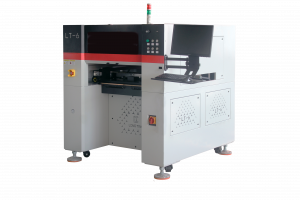
- Pick and Place Machine
The PnP is equivalent to the robot’s manipulator, which takes out the components from its package according to the pre-programmed procedure and places them on the corresponding position of the printed board. - The basic structure of the mounting machine
(1) the base – used to install and support all the components of the mounting machine, currently tends to use cast iron parts. The cast iron part has the quality big, the vibration small characteristic, is conducive to guarantee the placement accuracy.
(2) supply material device – supply material device is used to place various packing forms of components, there are bulk, braid, tube and tray four kinds of types. When mounting, the various types of feeder are installed to the corresponding feeder frame.
(3)Printed circuit board transmission device – at present most mounter directly adopts the track transmission, also some mounter adopts the table transmission, namely fixes the PCB in the working table, the table runs on the transmission track.
(4) mount head – mount head is the most complicated, the most key component on the mount machine, it is equivalent to the mechanical hand, used to pick up and put on the element device. Will each kind of chip in electronic component accurately place on the circuit board.
(5)The x, Y positioning transmission device of the mounting head – has the mechanical screw transmission (generally uses the DC servo motor drive); The magnetic ruler and the grating transmission. From the theoretical point of view, the accuracy of the magnetic ruler and the grating transmission is higher than the silk bar transmission; But in the maintenance repair aspect, the silk bar transmission is easier.
(6)Placement tool (suction nozzle)–different shape, size of components to use different suction nozzle to pick up and put, general components use vacuum suction nozzle, for shaped components (for example, no suction plane connector, etc.) also have use mechanical claw structure.
(7) Alignment system – there are mechanical alignment, laser alignment, laser plus visual alignment, and full visual alignment system.
(8) computer control system – computer control system is the command center of all the operations of the mounting machine, the current computer control system of most of the mounting machine using the Windows interface.
- The main technical index of the pasting machine
(1)Placement accuracy: Placement accuracy includes three contents: placement accuracy, resolution and repeat accuracy.
The mounting accuracy – is refers to the offset of the standard mounting position relative to the printed board after the components are mounted. Generally speaking, mount Ch in the component requires to reach ±0.03mm, mount high density narrow pitch SMD at least requires to reach ±0.06mm.
Resolution – resolution is a measure of the smallest increment of the operation of the mounting machine (for example, each step of the screw is 0.01 mm, then the resolution of the mounting machine is 0.04 mm), and the resolution is an important index when measuring the accuracy of the machine itself. However, the actual placement accuracy includes the sum of all errors, therefore, the resolution is rarely used when describing the performance of the placement machine, and is generally used when comparing the performance of the placement machine.
Repeat accuracy – repeat accuracy refers to the ability of pasting head to return to the calibration point repeatedly. There is a certain correlation between the mounting accuracy, resolution, and repeat accuracy.
(2)SMD speed: general high speed machine mounting speed is 0.2S/Chip components within, at present the highest mounting speed is 0.06S/Ch in components; high precision, multifunctional machine is generally medium speed machine, mounting speed is 0.3-0.6S/Chip components about.
(3) alignment mode: the alignment mode of the patch has mechanical alignment, laser alignment, full visual alignment, laser and visual hybrid alignment, etc.. Among them, full visual alignment highest precision.
(4)Placement area: decided by mounting machine transmission track as well as mounting head movement range, generally the smallest PCB size is 50x50mm, the largest PCB size should be greater than 510x410mm.
(5)Placement function: general high-speed mounting machine can mainly mount various Chip components and smaller SMD devices (maximum 25x30mm or so); multifunctional machine can mount from 1.0×0.5mm (at present the smallest can mount 0.6×0.3mm)–54x54mill (maximum 60x60mm) SMD device, also can mount connector and other shaped components, the maximum connector length up to 150mm.
(6) can paste the number of kinds of components: can paste the number of kinds of components is decided by the number of the material station position of the material supplier of the pasting machine (to be able to accommodate the number of 8mm braided material supplier to measure). The general high-speed loading machine material station position is greater than 120, multi-function mechanism station position between 60-120.
(7) Programming function: It refers to online and offline programming and optimization function.
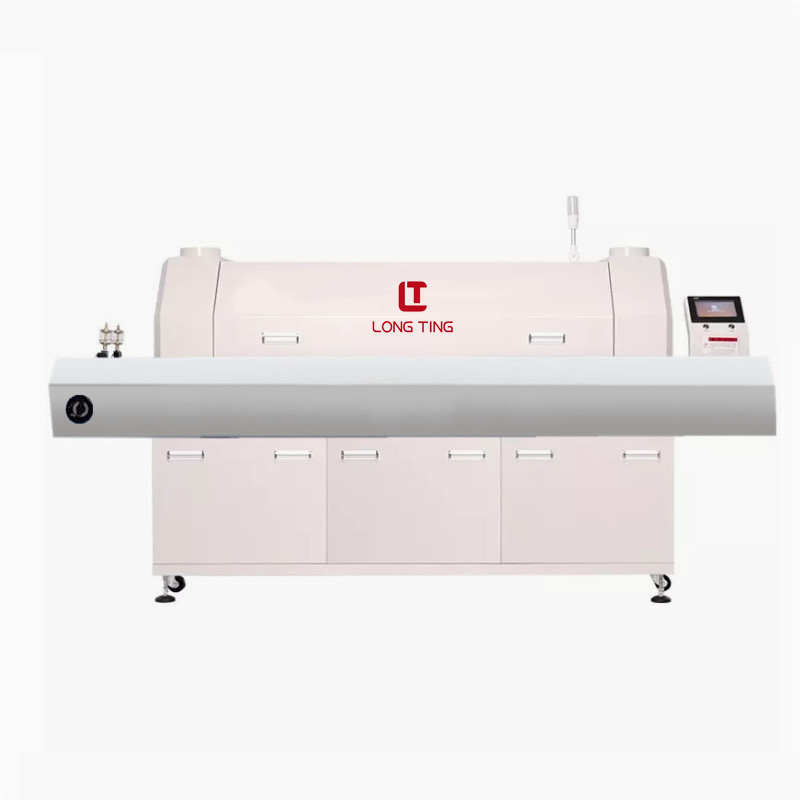
- Reflow Oven soldering
Reflow soldering is a soft brazing solder that realizes the mechanical and electrical connection between the solder end of the surface assembly components or pins and the pads of the printed board by re-melting the paste loaded soft brazing solder that is pre-allocated to the pads of the printed board. Reflow soldering is to solder the components to the PCB board, reflow soldering is to the surface post assembly device. Reflow soldering is to rely on the role of hot airflow on the solder joints, gel-like flux in a certain high temperature airflow for physical reaction to achieve SMD welding, the reason it is called “reflow soldering” because the gas circulation in the welding machine to generate high temperature to achieve the purpose of welding.
(1), reflow soldering principle is divided into several descriptions.
- When the PCB into the heating zone, the solvent in the solder paste, gas evaporated, at the same time, the flux in the solder paste wetting pads, component tips and pins, solder paste softening, collapse, covering the pad, the pad, component pins and oxygen isolation.
- When the PCB enters the holding area, so that the PCB and components get sufficient preheating to prevent the PCB from suddenly entering the soldering high-temperature area and damaging the PCB and components.
- When the PCB enters the soldering area, the temperature rises rapidly so that the solder paste reaches a molten state, liquid solder on the PCB pads, component tips and pins wetting, diffusion, diffusion or reflux mixing to form solder joints.
- PCB into the cooling zone, so that the solder joints solidify this; when the completion of reflow soldering.
Welomce to www.longtingsmt.com for learn more…..
Write to sales1@longtingsmt.com to get connection
